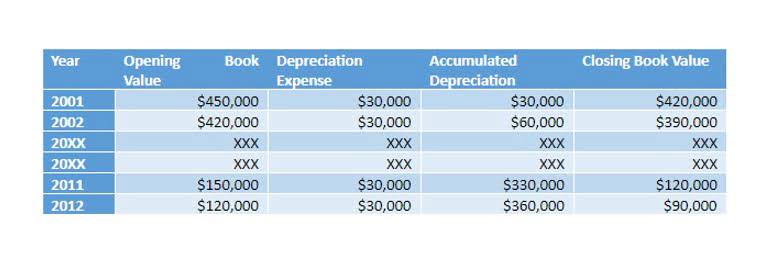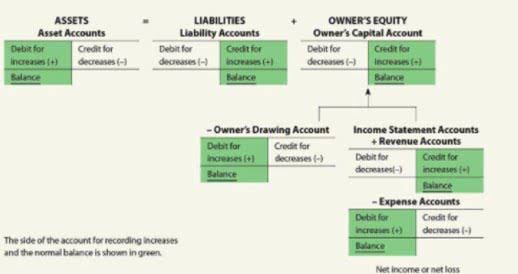What is Net Cash Flow and How to Utilize the Net CashFlow NCF Formula and Calculator

Net Cash Flow should be one of the stars in a constellation of financial metrics that guide your business navigation. For example, a few consecutive months of negative cash flow can result from paying off large amounts of debt. Conversely, a positive NCF can simply be the result of receiving a $5,000 loan, which is a lot different from a positive cash flow from making a $5,000 sale. Cash flow is concerned with the inflows and outflows of money into the business over time.
- Investors and analysts particularly pay attention to the cash flow from operating activities because this reveals a business’s ability to make a profit from core operations.
- Understanding the flow of cash within a business is a fundamental block in understanding its financial performance.
- If the total is positive, it indicates that the company is generating more cash than it is using; a negative total suggests the opposite.
- Enerpize provides real-time cash flow analysis, enabling businesses to forecast future cash requirements.
- Regularly monitoring net cash flow is essential for effective cash management and decision-making in any business.
Everything You Need To Master Financial Modeling

Net cash flow from investing activities refers to the cash generated or spent on activities related to acquiring and disposing of long-term assets, investments, and securities. It reflects how much cash the company has paid or received on its investments during a particular period. Additionally, bookkeeping practices play a vital role in maintaining accurate financial records. The accrual accounting method provides a detailed breakdown of revenue and expense recognition, but businesses must ensure that their cash flow remains positive.
- By analyzing government data, investing calculations, and marketplace trends, companies can make informed decisions about CapEx and debt financing.
- Consequently, business owners must figure out ways to improve cash flow through means such as discounts for upfront payments, chasing late payments, or through loans.
- If the year-over-year (YoY) change in NWC is positive – i.e. net working capital (NWC) increased – the change should reflect an outflow of cash, rather than an inflow.
- There are so many scenarios that can cause fluctuations in net cash flow.
- Together, these streams paint a detailed financial picture, crucial for savvy decision-making.
Breaking Down the Net Cash Flow Formula
However, a period of negative cash flow isn’t necessarily a bad thing, just like a period of positive cash flow Bookkeeping for Painters isn’t necessarily a good thing. NCF gives a business owner and potential investors insight into the financial health of a business. Having negative cash flow for many consecutive months can be a sign that your business is in trouble.
Automatic Data Import

Profit, in contrast, is the amount of money that remains from your sales revenue after all expenses have been subtracted. To calculate NCF you take the amount of total cash ncf formula received (inflow) and subtract the total sum of money spent (outflow) by your company over a specific period. Now that we’ve gotten into the nitty-gritty, let’s jump into what the point of net cash flow actually is (what, you don’t love doing math for fun?!). The net cash flow formula shows you how much capital you have on hand to continue operating your business. Cash is important for day-to-day operations—you often need it to pay bills, vendors, insurance, and other necessary operating expenses. By looking at trends, you can see whether net cash flow is consistently increasing or decreasing and how this relates to revenue-driving activities, capital investments, or debt financing decisions.

Profitable companies can have cash strain – especially if small and investing heavily in growing. A positive net cash flow indicates that a business has sufficient liquidity to meet its financial obligations, invest in growth opportunities, and reward its stakeholders. Net cash flow isn’t just a snapshot of the present; it also offers a glimpse into a company’s financial future. When you track NCF over time, patterns emerge, helping predict how a company will manage its cash down the road. Regular positive cash flows may indicate a trajectory of growth and the ability to fund future investments. In contrast, a trend of negative cash flows could signal stormy financial weather ahead, urging caution or a reevaluation of future commitments.
For example, let’s say you earned $250,000 in revenue this normal balance month and spent $180,000 on expenses. While accrual accounting has become the standardized method of bookkeeping per GAAP reporting standards in the U.S., it is still an imperfect system with several limitations. Positive NCF opens up many opportunities for a business, such as the ability to invest in research and development, new equipment, and hire more employees.

What is blockchain? And how can it make a positive impact to global issues?
Unlike accrual accounting, which recognizes revenues and expenses when incurred, NCF focuses on actual cash receipts and payments, making it a crucial indicator of short-term financial health. Companies leveraging the accrual basis accounting method often supplement NCF analysis with free cash flow (FCF) metrics to measure true operational performance. Net cash flow, in other words, focuses solely on the inflows and outflows of cash, providing a more accurate representation of a company’s liquidity and ability to meet its financial obligations.
Add a comment Cancel reply
Categories
- 24bettingin.com (1)
- 2627 (1)
- 3 (1)
- 303 (3)
- 3dicembre (1)
- 5-7 (1)
- 50 Free Spins Ggbet 268 (3)
- 50 Free Spins Ggbet 399 (3)
- 7 (1)
- 7 Games Bonus 267 (3)
- 760 (3)
- 7777777 (1)
- 77777777 (1)
- 777777777 (1)
- 791 (3)
- 888staruz.com (1)
- 888starz (1)
- 888starz bd (1)
- 888starz-chile.com (1)
- 888старз (1)
- 9030_wa (1)
- 9100_wa (1)
- 9440_prod (1)
- 9700_sat (4)
- 9760_sat (2)
- 9835_sat (2)
- 9900_sat (3)
- 9900_sat2 (1)
- 9990sat (1)
- 9potsofgold-slot.online (2)
- Aajogo Aposta 332 (3)
- act-agire (1)
- adaptationfestival.gr (1)
- Add Crypto To Mt5 328 (3)
- adobe generative ai 1 (1)
- adobe generative ai 3 (3)
- agentnowager-casino.com (1)
- ai bot name 2 (1)
- AI News (2)
- Alexander Casino Bonus 256 (3)
- amigowinscasino.com (2)
- amomama.es (1)
- Aplicatia Betano 313 (3)
- Aplicativo Luva Bet 167 (3)
- Aplicativo Pagbet 102 (2)
- Aposta Maxima Bet 446 (3)
- App Star Casino 417 (3)
- Are Cbd Oil Dog Treets Outlawed Anywhere In The Us 657 (3)
- article (1)
- articles (2)
- austria (2)
- Auto Detailing (1)
- Aviator (1)
- Aviator Bet 645 (3)
- Aviator Bet 939 (3)
- aviator brazil (1)
- aviator casino DE (1)
- aviator casino fr (1)
- aviator IN (1)
- aviator ke (1)
- aviator mz (1)
- aviator ng (8)
- azsportsweb.com (1)
- B Casino No Deposit Bonus 768 (3)
- B1 Bet Casino 201 (1)
- B1bet Afiliados 971 (3)
- b1bet BR (1)
- B1bet Login 448 (1)
- Bahigo Schweiz (5)
- Baixar Aplicativo Blaze Apostas 884 (3)
- Baji Live Sign Up 981 (3)
- Bankobet (1)
- Basaribet (1)
- bass-bet.eu.com – UK (1)
- bbrbet colombia (3)
- bbrbet mx (1)
- Bc Game Casino 330 (3)
- Bc Game India 448 (1)
- Bc Game Sign Up 524 (2)
- bc-bdgame.com (1)
- bc-fun-game.com (1)
- bc-game-kazino.com (1)
- bc-games-indonesia.com (1)
- bcg-download.com (1)
- bcgame-apps-bd.com (1)
- bcgame-hindi.com (1)
- bcgame-online.co.in (1)
- bcgame1 (2)
- bcgame2 (2)
- bcgame3 (2)
- bcgame4 (2)
- bcgame5 (1)
- Bdm Bet 292 (3)
- Bdm Bet 329 (3)
- Bdm Bet 738 (2)
- Bdm Bet Casino 571 (3)
- Bdm Bet Promo Code 280 (3)
- Bdmbet App 106 (3)
- Bdmbet App 670 (1)
- Bdmbet App 825 (1)
- Bdmbet Casino 573 (3)
- Bdmbet Casino En Ligne 147 (3)
- Bdmbet Casino En Ligne 41 (3)
- Bdmbet Casino En Ligne 805 (3)
- Bdmbet France 543 (3)
- Bdmbet Retrait 415 (3)
- Becric Review 791 (3)
- bedpage (1)
- bestinsurancespy.com (1)
- bet-12 (1)
- bet-13 (1)
- bet-andreas-azerbaijani.com (1)
- bet1 (2)
- bet2 (2)
- bet3 (2)
- Bet365 Cricket 537 (1)
- Bet365 Live 565 (3)
- Bet365 Login 809 (3)
- Bet365 Online 596 (3)
- bet365casino.gr – GR (1)
- bet4 (1)
- bet5 (1)
- Betandreas Kazino 144 (3)
- betandreas-india.com (1)
- betandreas-qazaq.com (1)
- betandreas-yukle.com (1)
- betandreas.co.in (1)
- Betano Apk Download 190 (3)
- Betano Casino 805 (3)
- Betano Pariuri 675 (1)
- betathomeerfahrungen.de – DE (1)
- Betbarter Login 303 (3)
- Betboo Casino 750 (3)
- betcocrashgames.com (1)
- Betesporte Entrar 533 (3)
- Betflag App 145 (3)
- Betflag Casino 956 (3)
- betgoodwinsistersites.net – UK (1)
- Betmexico Casino En Linea 308 (3)
- Betnacional E Confiavel 614 (3)
- Betonred Bonus 195 (1)
- Betonred Bonus 561 (3)
- Betonred Italia 437 (3)
- Betonred Italia 743 (3)
- Betpremium Apk 945 (3)
- betpro-login.com (1)
- betproexchange-pk.com (1)
- Bets 990 (2)
- BETT (1)
- betting (1)
- bettisistersites.net – UK (1)
- bettt (1)
- betwinner (1)
- betwinner-ar.com (1)
- betwinner-brasil.net (2)
- betwinner-cote-divoire.com (3)
- betwinner-portuguese.com (1)
- betwinner1 (1)
- betwinner2 (1)
- betwinner3 (1)
- Bgame Casino 869 (3)
- Big Casino Snai App 885 (3)
- big-bass-bonanza-slot.online (3)
- big-bass-splash-echtgeld-spielen.online (1)
- bigbasssplash-echtgeld-spielen.online (3)
- Bingo Eurobet 760 (3)
- bizzo casino (1)
- Blaze Entrar 489 (1)
- blog (17)
- Bob Casino 175 (3)
- Bono Gratogana 690 (3)
- book of ra (2)
- book of ra it (1)
- book-of-dead-slot-canada.online (2)
- book-of-dead-slot-demo.online (1)
- Bookkeeping (11)
- Boxing (1)
- Br Betano 401 (3)
- Brabet App 452 (3)
- Brabet Casino 438 (3)
- Brabet E Confiavel 99 (1)
- Brand (1)
- Bruce Bet (1)
- Bruce Bet Offizielle Website (1)
- buffalo-blitz-demo.online (2)
- buffalo-king-megaways-gokkasten.online (2)
- bwin-casino-greece.com – GR (1)
- bwincasino-greece.com – GR (1)
- Car News (2)
- Car Reviews (1)
- Car Service 442 (3)
- cashed-casinò.it – IT (1)
- cashedcasinoerfahrungen.de – DE (1)
- casibom tr (2)
- casiniacasino-greece.com – GR (1)
- casino (82)
- Casino 770 Mobile 93 (3)
- Casino Bdmbet 580 (1)
- Casino Bdmbet 804 (3)
- Casino Big 968 (3)
- Casino Cresus En Ligne 621 (3)
- Casino Days Free Spins 16 (3)
- Casino Days No Deposit 50 Free Spins 63 (3)
- casino en ligne fr (1)
- Casino Energy 366 (1)
- Casino Energy 56 (3)
- casino infinity schweiz (1)
- Casino Kingdom Bonus Codes 327 (3)
- Casino Kingdom Mobile Login 553 (3)
- Casino Mania 287 (3)
- casino onlina ca (1)
- Casino online (8)
- Casino Online 108 (1)
- casino online ar (1)
- casinò online it (1)
- Casino Pin Up 331 (1)
- Casino Sites Korea (1)
- Casino Sites Rating in South Korea (1)
- casino utan svensk licens (1)
- casino zonder crucks netherlands (2)
- casino-1 (1)
- casino-10 (1)
- casino-11 (2)
- casino-12 (1)
- casino-13 (2)
- casino-14 (1)
- casino-15 (1)
- casino-16 (1)
- casino-18 (1)
- casino-19 (1)
- casino-4 (1)
- casino-5 (1)
- casino-6 (1)
- casino-7 (1)
- casino-8 (1)
- casino-9 (1)
- casino-betriot.fr – FR (1)
- casino-casinia.gr – GR (1)
- casino-casinoin.gr – GR (1)
- casino-glory india (1)
- casino-leon-greece.com – GR (1)
- casino-leon-greece.net – GR (1)
- casino-magicwin2.com (1)
- casino-spin-panda.com (1)
- casino1 (2)
- casino2 (2)
- casino3 (1)
- casino4 (1)
- casino5 (2)
- casino6 (1)
- casinocoin (1)
- casinoggbet.com (2)
- casinoggbet.com anchor (1)
- Casinomania Ruota Della Fortuna 983 (3)
- CCCCCCC (1)
- Chathub (5)
- Chatib (5)
- Chicken Cross The Road Game 544 (3)
- Chicken Crossing Road Gambling Game 633 (3)
- Chicken Road Casino 12 (3)
- Chicken Road Casino 833 (3)
- Chicken Road Demo 820 (3)
- Chicken Road Game Money 649 (2)
- chris-herzog.ch – offizielle Website 20bet in der Schweiz (1)
- christofilopoulou.gr (1)
- Cities (4)
- congobet.pro (1)
- cosmobetcasino.onlin (1)
- covid (2)
- crazy time (5)
- Crickex Download 821 (3)
- Crypto (1)
- Crypto News (1)
- Crypto2 (1)
- Cryptocurrency News (5)
- Cryptocurrency service (1)
- crystal-ball-kostenlos-spielen.online (1)
- csdino (1)
- cultura.cosenza (1)
- cultura.cosenza.it (1)
- cunt wars (1)
- cz (1)
- Darmowe Spiny Energycasino 365 (1)
- DE_steroide (1)
- DE_testosteron (1)
- Demo Slot Jili 559 (3)
- dreamjackpotsistersites.co.uk – UK (1)
- Echat (5)
- eeeeee (1)
- elgrecotreviso (1)
- elonbet-bd1.com (1)
- Energy Casino 143 (3)
- Energy Kasyno 82 (3)
- Energycasino Bonus 390 (3)
- Energycasino Bonus Bez Depozytu 159 (3)
- Energycasino Bonus Bez Depozytu 32 (3)
- Energycasino Bonus Bez Depozytu 322 (3)
- Energycasino Bonus Bez Depozytu 364 (1)
- Energycasino Free Spin 190 (3)
- Energycasino Free Spin 31 (3)
- Energycasino Free Spin 38 (3)
- Energycasino Free Spin 990 (3)
- Energycasino Kod Promocyjny 336 (3)
- Energycasino No Deposit Bonus 797 (3)
- Energycasino Opinie 785 (3)
- Energycasino Pl 145 (3)
- Energycasino Promo Code 157 (3)
- Energycasino Promo Code 614 (3)
- Energycasino Promo Code 685 (3)
- erome (2)
- ES_anabolicos (1)
- ES_anabolizantes (1)
- Esportiva Bet Casino 467 (3)
- estonia-bcgame.com (1)
- Eth Gas Fee Calculator 486 (3)
- Eurobet Bingo 328 (1)
- Eurobet Casino 679 (3)
- Exness1 (1)
- exness2 (1)
- Exness3 (1)
- F12bet Entrar 93 (3)
- Fair Play Apk 995 (3)
- Fairplay 1 804 (3)
- Fairspin-casino (1)
- Fansbet Promo Code 108 (1)
- Fansbet Sports 687 (3)
- fansport-az (1)
- fansport-casino (1)
- Fantasy Bet 77 (3)
- Fantasy Team App 453 (1)
- Fantasybet 851 (2)
- farmakeioorama.gr (1)
- Fastbet App Download 587 (3)
- Fastbet Bonus Benvenuto 750 (1)
- Fastbet It 658 (3)
- Fat Boss 474 (3)
- Fat Boss Casino 324 (3)
- Fat Boss Casino 450 (3)
- Fat Boss Casino 71 (1)
- Fat Boss Casino 778 (3)
- Fatboss Bonus 987 (3)
- Fatboss Fr 555 (3)
- Fatboss Online 675 (1)
- faust-slot-de.online (1)
- faustslot-kostenlos.online (1)
- Fb 777 14 (3)
- Fb 777 Casino 740 (3)
- Fb 777 Casino 998 (3)
- Fb 777 Login 492 (3)
- Fb777 Live 950 (3)
- Fb777 Login 536 (3)
- Fb777 Login 54 (3)
- Fb777 Pro 456 (3)
- Fb777 Slots 56 (3)
- Fb777 Vip Login Registration 255 (3)
- Fb777 Vip Login Registration 341 (3)
- Fb777 Vip Login Registration 916 (3)
- Fb777 Win 886 (3)
- festivaldellacooperazioneinternazionale (1)
- find a wife (1)
- FinTech (4)
- firstdepositbonus (1)
- fishinfrenzy-tragaperras.online (2)
- flashdash-nodepositbonus.com (2)
- Forex Trading (11)
- Fortune Gems Slot 582 (3)
- Fortune Gems Slots 552 (3)
- Fortune Gems Slots 604 (3)
- Fortune Mouse Bet 864 (3)
- Fortune Mouse Gratis 762 (3)
- fortune tiger brazil (1)
- fr (1)
- Free Fortune Gems 17 (1)
- freespins (1)
- freshbetting (1)
- Fruit Party Casino Slot 714 (3)
- Fruit Party Slot Online 511 (3)
- fruitinator-kostenlos-spielen.online (1)
- fruity-reels-gokkasten.online (1)
- Galactic Wins 179 (3)
- Galactic Wins Bonus Code 90 (3)
- Galactic Wins Bonus Code For Existing Players 160 (3)
- Galactic Wins Casino No Deposit Bonus 149 (1)
- Galactic Wins Casino No Deposit Bonus 227 (3)
- Galactic Wins Casino No Deposit Bonus 487 (3)
- Galactic Wins No Deposit 946 (3)
- Galactic Wins Review 501 (3)
- Galactic Wins Sign Up Bonus 428 (3)
- Galactic Wins Withdrawal Time 522 (3)
- Gama Casino (1)
- gambling (4)
- Game (1)
- Games (20)
- gates-of-olympus-1000-slot.online (1)
- gems-bonanza-demo.online (1)
- generative ai application landscape 1 (1)
- Gg Bet Casino 128 (3)
- Ggbet Casino 44 (3)
- ggbet-casino-pl.net (3)
- ggbet-casino-pl.net anchor (1)
- ggbet-casino.win anchor (1)
- ggbetpolska.net (2)
- giacomoarengario.com (1)
- glory-casinos tr (1)
- glory-online-casino (1)
- glorycasinoazerbaijan (1)
- glorycasinoz.com (1)
- godofwinscasino.dk – DK (1)
- Gold Bet 164 (3)
- Goldbet App Android 165 (3)
- Goldbet App Android 939 (3)
- Goldbet It 167 (3)
- Golden Casino (1)
- Golden Panda Avis 990 (3)
- goldofpersia-echtgeld-spielen.online (1)
- gpt 5 capabilities 5 (1)
- granfondoroma (1)
- granfondoroma.com (1)
- Grato Gana 162 (1)
- Gratogana App 266 (3)
- Gratogana App 337 (3)
- Gratogana Casino 318 (3)
- Gratogana Casino 445 (3)
- Gratogana Online 746 (3)
- Gratowin 7 Euro Gratis 572 (1)
- Gratowin Casino 554 (3)
- Gugobet Login Registration 973 (3)
- guide (2)
- gullybet-in.com (1)
- happytigersistersites.net – UK (1)
- hu (2)
- id-1xbet.com (1)
- ilpedante.org (1)
- indon-1xbe1.com (2)
- info (6)
- instacoin.news (1)
- Is Galactic Wins Legit 464 (3)
- Is Galactic Wins Legit 578 (1)
- IT Vacancies (1)
- IT Вакансії (2)
- IT Образование (3)
- Italian casino (1)
- itawinnita7 (1)
- ivermectina (1)
- IviBet (1)
- Ivibet Schweiz (2)
- Jackpot City Casino Nz 228 (3)
- jardiance (2)
- Jeetbuzz 365 Login 142 (3)
- Jeetbuzz Download 839 (3)
- jemqorlyqpenkures.kz (1)
- Jeux Du Poulet Argent 457 (1)
- Jili 777 Lucky Slot 370 (3)
- Jili Slot 777 503 (3)
- Jili Slot 777 875 (3)
- Jili Slot 777 Login 419 (3)
- Jogar Tigre Sortudo Demo 167 (3)
- Jogo Dice Betfiery 891 (2)
- jokabetsistersites.me.uk – UK (1)
- joker8avis.fr – FR (1)
- joker8erfahrungen.de – DE (1)
- joycasino-az (1)
- joycasino-azerbaijan (1)
- Juicy Fruits (2)
- jumanjislot-tragaperras.online (3)
- KaravanBet Casino (1)
- Kasyno Online PL (2)
- kasyno-ggbet.net (3)
- kasyno-vulkan.net (2)
- kasynoggbet.net (1)
- king johnnie (2)
- Kingmaker Casino Deutschland – Offizielle Seite – ampel-beenden.de (1)
- kingmaker-casino-greece.com – GR (1)
- kingmakercasino-greece.com – GR (1)
- kittybingosistersites.co.uk – UK (1)
- Kiwi Online Pokies 999 (3)
- Kiwi Treasures 240 (3)
- krikya-casino.com (1)
- Kudos App 30 (3)
- Kudos Casino Bonus Codes 310 (3)
- Kudos Casino Bonus Codes 519 (3)
- Kudos Casino Bonus Codes 576 (3)
- Kudos Casino Bonus Codes 640 (3)
- Kudos No Deposit Bonus 757 (3)
- Kudos No Deposit Bonus 981 (1)
- kwiffsistersites.me.uk – UK (1)
- legalsteroid (1)
- legalsteroids (1)
- Lemon Casino Bonus 294 (3)
- Lemon Casino Pl 87 (3)
- lemoncasinovelemenyek.hu – HU (1)
- letsjackpot-casino.com (1)
- libraspins.casin (1)
- lifeselector (1)
- Linebet Online 387 (1)
- linebet-maroc1.com (1)
- list crawler orlando (1)
- Lottomatica Better 195 (3)
- Lottomatica Gratta E Vinci 127 (3)
- lovecasino2-online.com (1)
- luckstar.my (1)
- luckstar.site (1)
- lucky-star.my (1)
- luckymistercasino.com (1)
- luckystar123clubin.org (1)
- luckystar777india.org (1)
- luckystaraviatorin.org (1)
- luckystarcasino.info (1)
- luckystarcasino.info (1)
- luckystarcasinoin.org (1)
- luckystars.info (1)
- Luva Bet Plataforma 871 (3)
- Luvabet Casino 259 (3)
- lyrica (1)
- Madnix Casino Retrait 33 (3)
- magicmirrordeluxe-tragaperras.online (3)
- mal-1xbet.com (1)
- Maribet casino TR (1)
- Marjo Sports 57 (3)
- Masalbet (1)
- Matchpoint Sisal 428 (3)
- maxcasinousa.com (1)
- Mcw Casino App 990 (3)
- Mcw Casino Live 722 (3)
- medic (2)
- megajoker-echtgeld-spielen.online (2)
- megamoolah-au-slot.online (2)
- miglioricasinononaams.com (1)
- minimitalletuskasinot.co (1)
- Mission Uncrossable Game Download Apk 879 (3)
- Mma Bet Aposta 259 (3)
- Mobileporngames (2)
- moneytrain3-kostenlos-spielen.online (1)
- Monobrand (4)
- moon-princess-100-demo.online (2)
- Moonwin Casino Schweiz (1)
- mosbet-1 (1)
- mostbet (5)
- Mostbet 734 (3)
- Mostbet Apk Download 24 (3)
- Mostbet Brasil 647 (3)
- Mostbet Casino 381 (3)
- mostbet hungary (1)
- Mostbet Kazino 639 (3)
- Mostbet Kod Promocyjny 807 (1)
- Mostbet Kz 635 (1)
- Mostbet Online 83 (3)
- mostbet ozbekistonda (1)
- Mostbet Russia (2)
- mostbet tr (5)
- mostbet-2 (1)
- mostbet-4 (1)
- mostbet-5 (1)
- mostbet-sports.com (1)
- Mostbetbd 594 (3)
- Mr Bet casino DE (1)
- mr jack bet brazil (1)
- mx-bbrbet-casino (1)
- my-1xbet.com (1)
- mystakesistersites.me.uk – UK (1)
- n1-casino-greece.net – GR (1)
- nationalbet-online.com (1)
- netbetcasino.fi – FI (1)
- Netwin Casino 73 (3)
- Netwin Codice Promo 6 (3)
- News (373)
- Nine Casino (3)
- Nine Casino Schweiz (1)
- ninlay.eu.com – UK (1)
- Nn777 Slot Jili 237 (3)
- Nn777 Slot Jili 606 (3)
- Novibet App 736 (3)
- Nowe Kody Do Lemon Casino 186 (3)
- Nowe Kody Do Lemon Casino 864 (3)
- Official global website of the bookmaker 22bet – 22betofficial.com (1)
- Official website of HellSpin casino (1)
- Offizielle 20bet-Website (1)
- Offizielle Bahigo-Mirrorsite in der Schweiz – cocktailsbitters.ch (1)
- Offizielle Website von 22bet – photo18.ch (1)
- Offizielle Website von 22Bet in Deutschland (1)
- olymp-casino1.com (1)
- omegle (13)
- Omegle cc (20)
- omegle.is (3)
- Online Casino (73)
- online casino au (1)
- Online Casino Australia Real Money 401 (1)
- onlinecasinobtc (1)
- onlone casino ES (1)
- OOOOOO (1)
- ozwin au casino (1)
- p0cketopti0n.com (2)
- Pablic (2)
- pages (3)
- palazzocornermocenigo (1)
- Parimatch Casino 199 (2)
- partner2b (1)
- Party Casino 158 (3)
- Partycasino Bono 366 (3)
- Partycasino Bono 653 (3)
- Partycasino Entrar 142 (3)
- Partycasino Entrar 713 (3)
- pelican casino PL (1)
- phoenixwhymytrailers.com (1)
- Pin UP (1)
- Pin Up Brazil (2)
- Pin UP Online Casino (1)
- Pin Up Peru (1)
- Pin-Up (1)
- pin-up-kazino-uz.net (2)
- pinco (2)
- Pinco Casino 40 (3)
- pitbetcasino.com (1)
- Pixbet Palpite 231 (3)
- PL casino (1)
- Play Croco Australia 479 (3)
- Play Croco Australia 905 (3)
- Play Croco Casino Australia 583 (3)
- Play Croco Login 109 (3)
- Playcroco App 3 (3)
- Playcroco Mobile Casino 606 (1)
- Playcroco Mobile Casino 96 (3)
- Playzilla (1)
- Playzilla Schweiz (2)
- plinko (3)
- plinko in (1)
- plinko UK (2)
- plinko_pl (2)
- plinko-demo.online (2)
- plinkocasino-canada.online (2)
- plinkocasino-nederland.online (3)
- pocket-option-in.com (1)
- pocket-option.fund (1)
- pocket-option.llc (1)
- pocket-zerkalo.ru (1)
- pocketoption (1)
- pocketoption-invest.com (1)
- pocketoption-new.com (1)
- pocketoption-russia.com (1)
- poemsandcrimes.gr (1)
- porn games (1)
- porndude (1)
- Post (32)
- posts (4)
- PPPPPPP (1)
- press (3)
- primexbt-investment.com (1)
- primexbtnew.com (1)
- Qizilbilet (1)
- Queen 777 Casino Login 351 (1)
- Queen 777 Casino Login Philippines 192 (3)
- Queen 777 Casino Login Philippines Sign Up 466 (3)
- Queen777 App 626 (3)
- Queen777 Login 9 (3)
- Queen777 Register Login 850 (3)
- r2pbet-online.com (1)
- rabbitwin-casino.com (1)
- rabbitwincasino.onlin (1)
- Rabona Deutschland (1)
- rabona-casino-greece.com – GR (1)
- Ramenbet (2)
- raptorwinscasino.com (1)
- razor-shark-slot-kostenlos-spielen.online (1)
- Realsbet Aposta 503 (3)
- red light center (1)
- Review (4)
- reviewer (10)
- reviews (4)
- ricky casino australia (1)
- rise-of-olympus-demo.online (1)
- riseofolympus-slot-demo.online (3)
- rivistadiequipeco (1)
- Rizk Online Casino 231 (2)
- Roobet Schweiz (1)
- Royal Vegas Casino 385 (3)
- Royal Win 777 577 (3)
- RRRRRR (2)
- RRRRRRR (3)
- RRRRRRRR (1)
- rtbetrecensioni.it – IT (1)
- ru (2)
- Sat Bet 482 (3)
- Satbet India 249 (1)
- saturnbc.com (1)
- Scommesse Pokerstars 800 (3)
- se (9)
- Shiba Inu Coin Price 806 (1)
- Sisal Scommesse 846 (3)
- Site De Apostas Online 952 (1)
- Sky247 Download Apk 965 (3)
- Sky247 Login 573 (3)
- skybridgetechgroup.com (1)
- Skycity 391 (3)
- Slot (1)
- Slot Jackpot Monitor Jili 861 (3)
- slotimo-de.com (1)
- Slots (9)
- Slots` (2)
- slotspalace-casino-greece.com – GR (1)
- slotspalacecasino-greece.com – GR (1)
- slottica (1)
- Slottica 66 816 (3)
- Slottica Casino 274 (3)
- Slottica Casino 438 (2)
- Slottica Casino 925 (3)
- Slottica Casino 968 (1)
- Slottica Jak Wyplacic Pieniadze 284 (3)
- Slottica Jak Wyplacic Pieniadze 316 (3)
- Slottica Jak Wyplacic Pieniadze 504 (3)
- Slottica Kasyno 487 (1)
- Slottica Kod Promocyjny 338 (3)
- Slottica Login 485 (3)
- Slottica Login 768 (3)
- Slottica Opinie 651 (3)
- Slottica Opinie Forum 821 (3)
- Slottica Pl 637 (3)
- Sober living (9)
- soft2bet (1)
- Software development (2)
- spell-win.dk – DK (1)
- spell-win.pl – PL (1)
- spell-win.pt – PT (1)
- spellwin.dk – DK (1)
- spellwin.it – IT (1)
- spellwin.pl – PL (1)
- spellwin.pt – PT (1)
- Spin Bet Nz 491 (3)
- Spin Casino App 347 (3)
- spinanga-espanol.es – ES (1)
- Spinbet Login 995 (3)
- spinitfree (1)
- spins-heaven.casin (1)
- Spinz Casino Bonus Codes 589 (2)
- sport (1)
- Sportaza Prelievo 747 (3)
- sportaza-casino-greece.com – GR (1)
- sportsfocuz.com (1)
- Stake Casino (1)
- Stake Casino Schweiz (1)
- Starcasino App 678 (3)
- Starcasino Slot 432 (3)
- steroide (1)
- stromectol (2)
- sugar rush (3)
- Sugar Rush Schweiz (1)
- Sumatriptan (2)
- superhot40-tragaperras.online (2)
- sweet bonanza (3)
- sweet bonanza TR (2)
- Tala 888 966 (3)
- Tala 888 Casino 783 (3)
- Tala888 App Download 670 (3)
- tandemngo.gr (1)
- templetumble-slot.online (3)
- Tge Crypto 865 (1)
- thai-1xbet.com (2)
- thepokies08 (1)
- thepokies177 (1)
- thothub (1)
- Top casino (3)
- Top casino online (4)
- torgovlya (1)
- Trading1 (1)
- Trading3 (1)
- trading4 (1)
- tropicalheat-tragaperras.online (2)
- TTTTTTT (2)
- UA (1)
- UK_steroids (1)
- UK_testosteron (1)
- uncategorised (2)
- Uncategorized (26,561)
- updates (7)
- ur.primexbt-guide.com (1)
- usasexguide (2)
- Usdt Trc20 100 (1)
- Usyk Dubois (1)
- UUUUUU (1)
- UUUUUUU (1)
- Vai De Bet Baixar App 272 (3)
- Vai De Bete 168 (3)
- vavada-az-casino (1)
- vavada-az-kazino (1)
- Vegas 11 App 60 (3)
- Vegasino Bonus 446 (3)
- Vegasino Casino 278 (3)
- Vegasino Login 801 (1)
- Vegasino Promo Code 853 (3)
- vegasino.eu.com – UK (1)
- verde casino hungary (1)
- verde casino poland (1)
- verde casino romania (1)
- verifiedcasino (1)
- Vivabet Casino 939 (3)
- vivi-kz.com (1)
- vivi-uz.com (1)
- vivicasino-in.com (1)
- Vovan Casino (2)
- Vulkan Vegas Bonus 856 (3)
- Vulkan Vegas Casino 49 (3)
- vulkan-kasyno.com (2)
- vulkan-kasyno.net (2)
- Vulkanvegas 291 (3)
- Vulkanvegas 985 (3)
- wackypanda-slot.online (3)
- Wanabet App 800 (3)
- Wanabet Bono 491 (2)
- Wanabet Bono 959 (2)
- Wanabet Bono Bienvenida 979 (3)
- Wanabet Casino 404 (3)
- Wanabet Es 17 (3)
- Wanabet Movil 821 (3)
- Wanabet Promociones 341 (3)
- Wanabet Promociones 646 (3)
- wayseodirectory.com (1)
- wazambacasino-greece.com – GR (1)
- Wettigo (1)
- Wettigo Offizielle (1)
- Wettigo Schweiz (1)
- Wettigo Schweiz – Offizielle Website (1)
- Wild Sultan Avis 832 (3)
- wildwild2-casino.com (3)
- Wildz Casino Review 980 (3)
- Wildz Nz 342 (3)
- Winspark Join 306 (3)
- wolf-gold-gokkasten.online (1)
- wolfrun-slot.online (1)
- wonaco.eu.com – UK (1)
- www.carlagericke.com (2)
- www.livingfreeintennessee.com (2)
- www.newsvoir.com (1)
- www.varsitypetsonline.com (1)
- xanax (2)
- xarelto (2)
- xonbets.pl – PL (1)
- Ygo Chicken Game 788 (3)
- YYYYY (1)
- zerkalo-pocket.ru (1)
- Zet Casino Bonus 237 (3)
- Zet Casino Bonus 81 (3)
- Zet Casino Canada 219 (3)
- Zet Casino Games 714 (3)
- Zet Casino Review 475 (3)
- Zet Casino Withdrawal 351 (3)
- zh.primexbt-guide.com (1)
- Без категории (1)
- бет (2)
- бетвиннер (1)
- Комета Казино (3)
- лайнбет (1)
- лфйнбет (1)
- мельбет (5)
- мостбет (1)
- Новая папка (2)
- пин ап ру (1)
- пинап (1)
- Финтех (1)
- Форекс Брокеры (5)
- Форекс обучение (11)
- Швеция (3)
- 온라인카지노사이트 (1)
- 카지노사이트추천 (2)
- 한국 카지노 사이트 평가 (1)
Recent Posts
About us





